In the arrangement shown in Figure, and . String is light and inextensible. Find the acceleration of centre of mass of both the blocks. Neglect friction everywhere.

The correct Answer is:g/ 9 downwards
Step by step video, text & image solution for In the arrangement shown in Figure, m_A=2kg and m_B=1kg. String is light and inextensible. Find the acceleration of centre of mass of both the blocks. Neglect friction everywhere. by Physics experts to help you in doubts & scoring excellent marks in Class 12 exams.
Topper's Solved these Questions
- BOOK - MOTIONCHAPTER - CENTRE OF MASSEXERCISE - Exercise - 3 Level-II16videos
CENTRE OF MASS
- BOOK - MOTIONCHAPTER - CENTRE OF MASSEXERCISE - Exercise - 4 Level-I18videos
CENTRE OF MASS
- BOOK - MOTIONCHAPTER - CENTRE OF MASSEXERCISE - Exercise - 2 (Level-II)28videos
CENTRE OF MASS
- BOOK - MOTIONCHAPTER - Capacitance EXERCISE - EXERCISE -4 LEVEL II19videos
Capacitance
- BOOK - MOTIONCHAPTER - CIRCULAR MOTIONEXERCISE - EXERCISE - 416videos
CIRCULAR MOTION
Similar Questions
In the arrangment shown in figure, mA=1 kg, mB=4 kg. String is light and inextensible while pulley is smooth. Coefficient of friction between block A and the table is μ=0.2. Find the speed of both the blocks when block B has descended a height h=1 m. (Take ,g=10 ms−2)
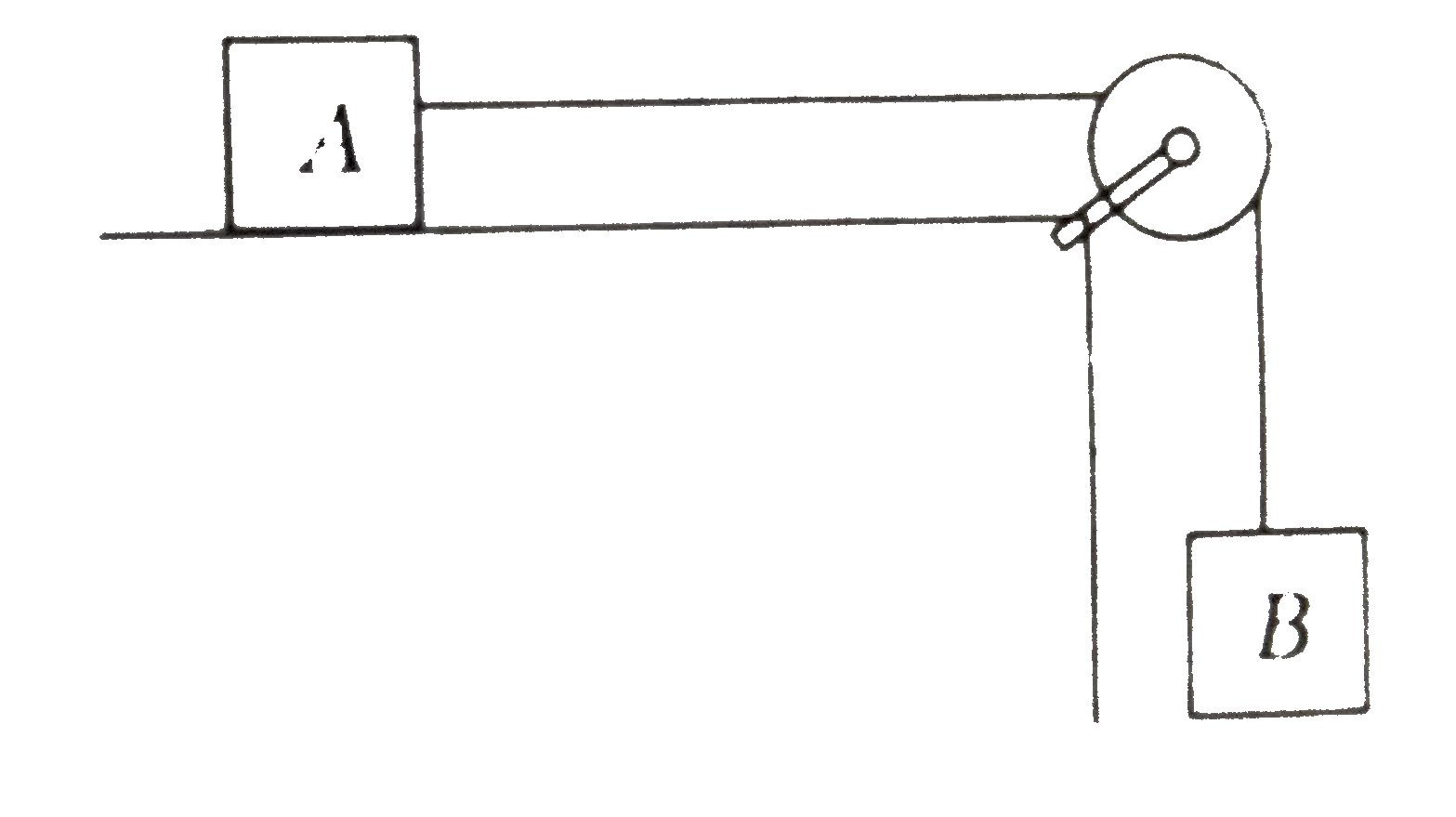 View Solution
View SolutionTwo blocks of equal mass are tied with a light string, which passes over a massless pulley as shown in figure. The magnitude of acceleration of centre of mass of both the blocks is : (neglect friction everywhere)
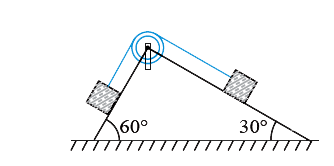 View Solution
View Solution
Knowledge Check
- Question 1 - Select One
In the arrangement shown, the pulleys are smooth and the strings are inextensible. The acceleration of block B is :
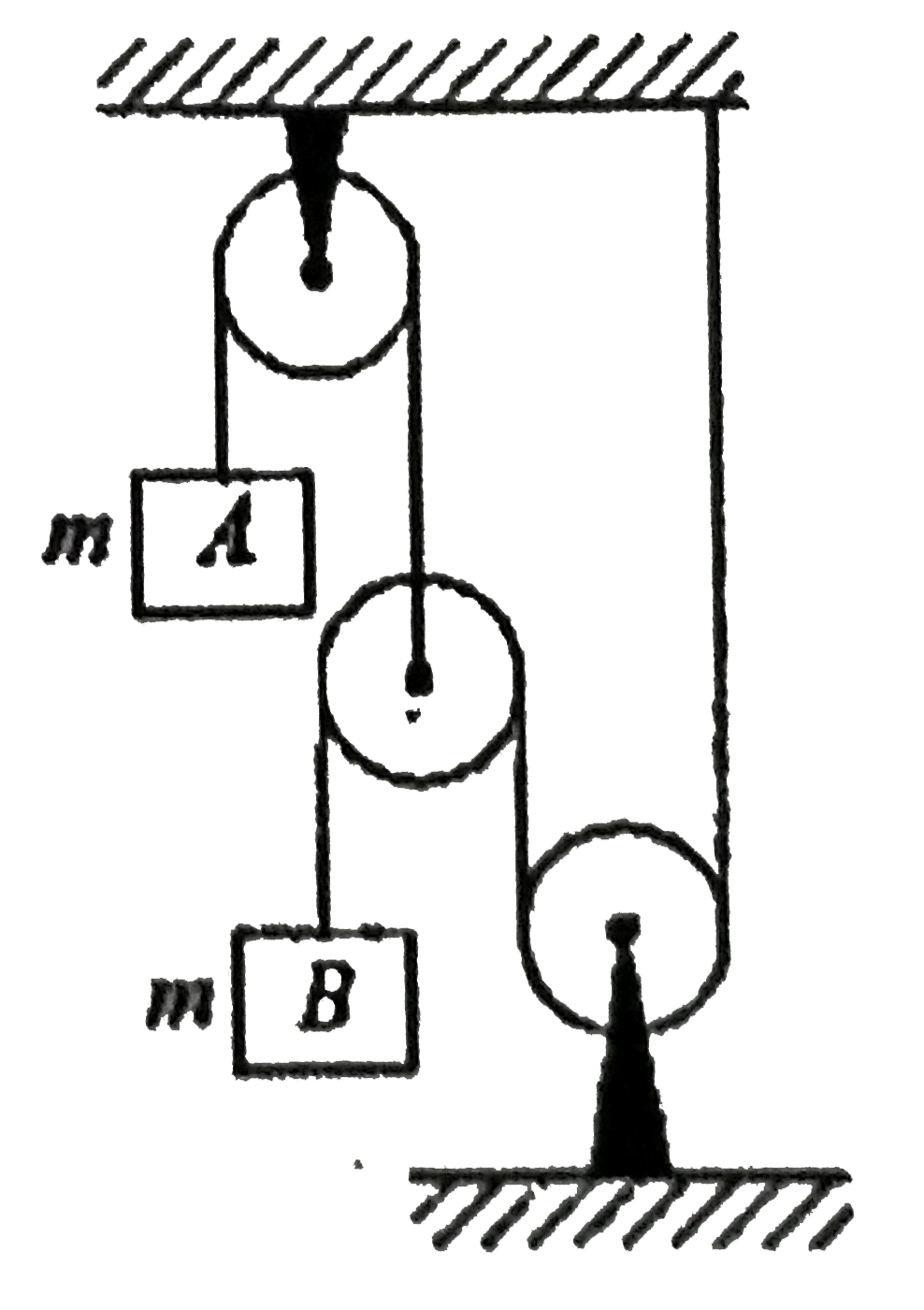 Ag/5B5g/5C2g/5D2g/3
Ag/5B5g/5C2g/5D2g/3 - Question 2 - Select One
In the arrangement shown in figure, string is light and inextensible and friction is absent every where. The speed of bothblocks after the block 'A' has ascend a height of 1m will be (g=10m/s2)
 A2m/sB2.58m/sC3m/sD3.58m/s
A2m/sB2.58m/sC3m/sD3.58m/s - Question 3 - Select One
In the arrangement shown in figure, m_A = m_B = 2kg. String is massless and pulley is frictionless. Block B is resting on a smooth horizontal surface, while friction coefficient beteen block A and B is μ=0.5 . the Maximum horizontal force F that can be applied so that block A does not slip over block B is.
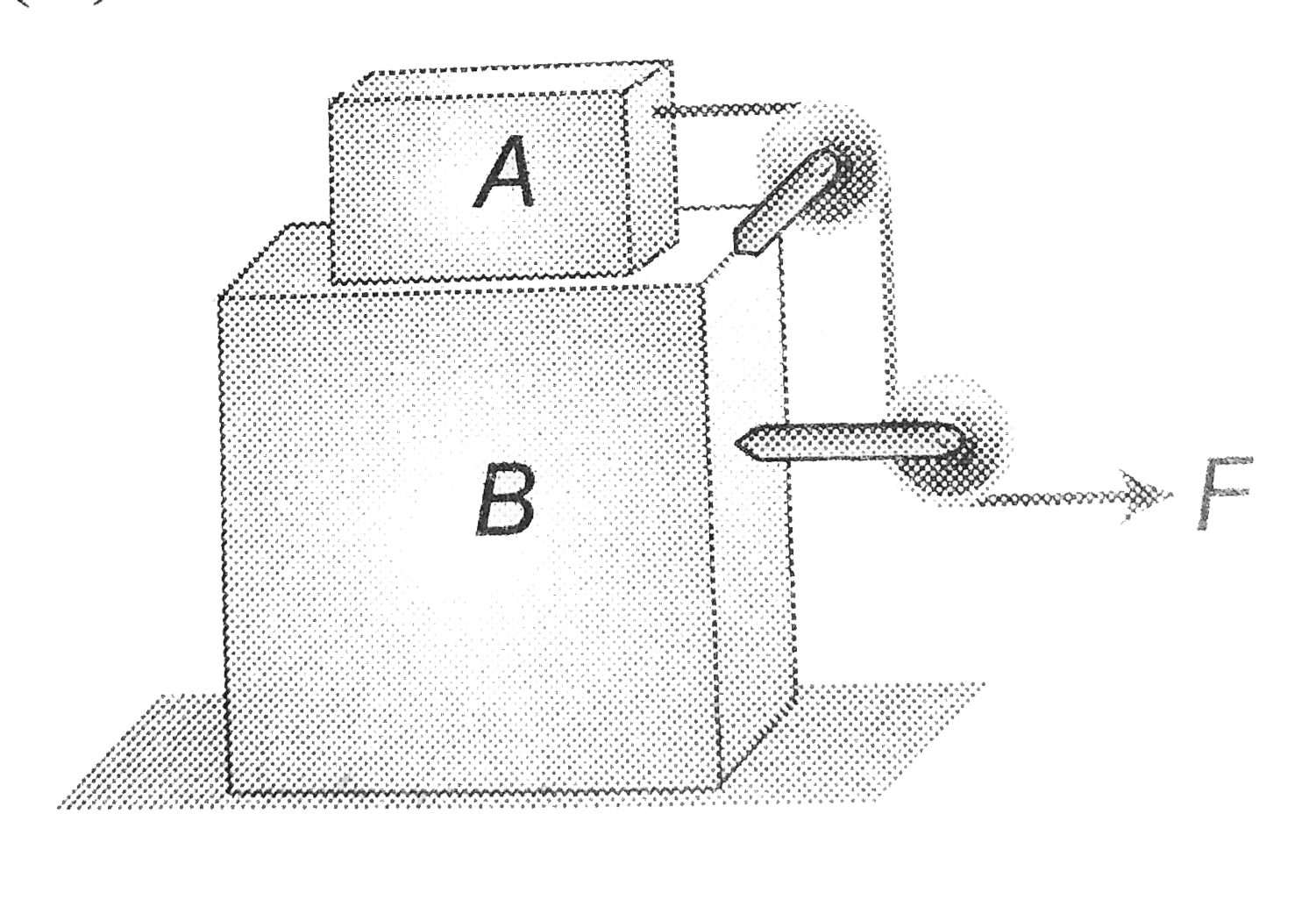 A25NB40NC30ND20N
A25NB40NC30ND20N
Two blocks A and B are arranged as shown in figure.The pulleys are light and frictionless.The strings are light and inextensible.If the acceleration of the block B is 3ms2 ,then the acceleration of the block A is __________ms2
View SolutionIn the arrangement shown in figure. The strings are light and inextensible. The surface over which block are placed is smooth.Find
(a) the acceleration of each block,
(b) the tension in each string.
 View Solution
View SolutionIn the arrangement shown in figure pulley P can move whereas other two pulleys are fixed. All of them are light. String is light and inextensible. The coefficient of friction between 2 kg and 3 kg block is μ=0.75 and that between 3 kg block and the table is μ=0.5. The system is released from rest
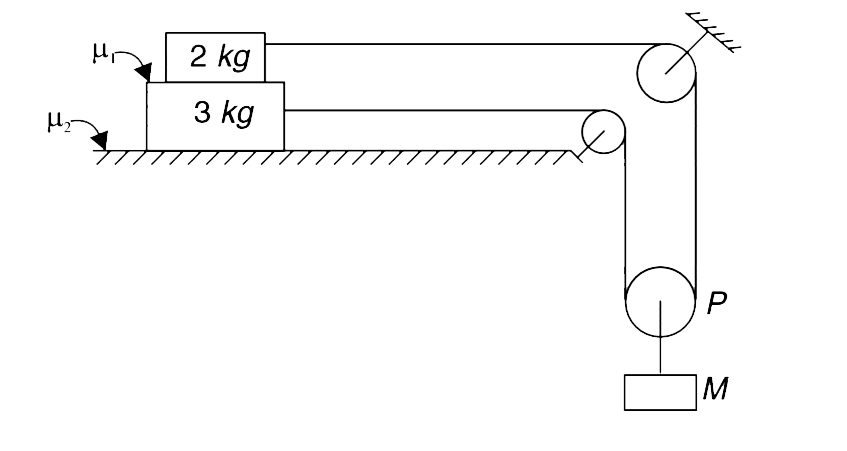
(i) Find maximum value of mass M, so that the system does not move. Find friction force between 2 kg and 3 kg blocks in this case.
(ii) If M = 4 kg, find the tension in the string attached to 2 kg block.
(iii) If M = 4 kg and μ1=0.9, find friction force between the two blocks, and acceleration of M.
(iv) Find acceleration of M if m1=0.75,m2=−0.9 and M = 4 kg.View SolutionIn terms of masses m1,m2 and g, find the acceleration of both the blocks shown in Fig. Neglect all friction and masses of the pulley.
View SolutionIn the arrangement shown in figure m1=1kg,m2=2kg, pullyes are massless and strings are light. For what value of M the mass m1 moves with constant velocity? (Neglect friction)
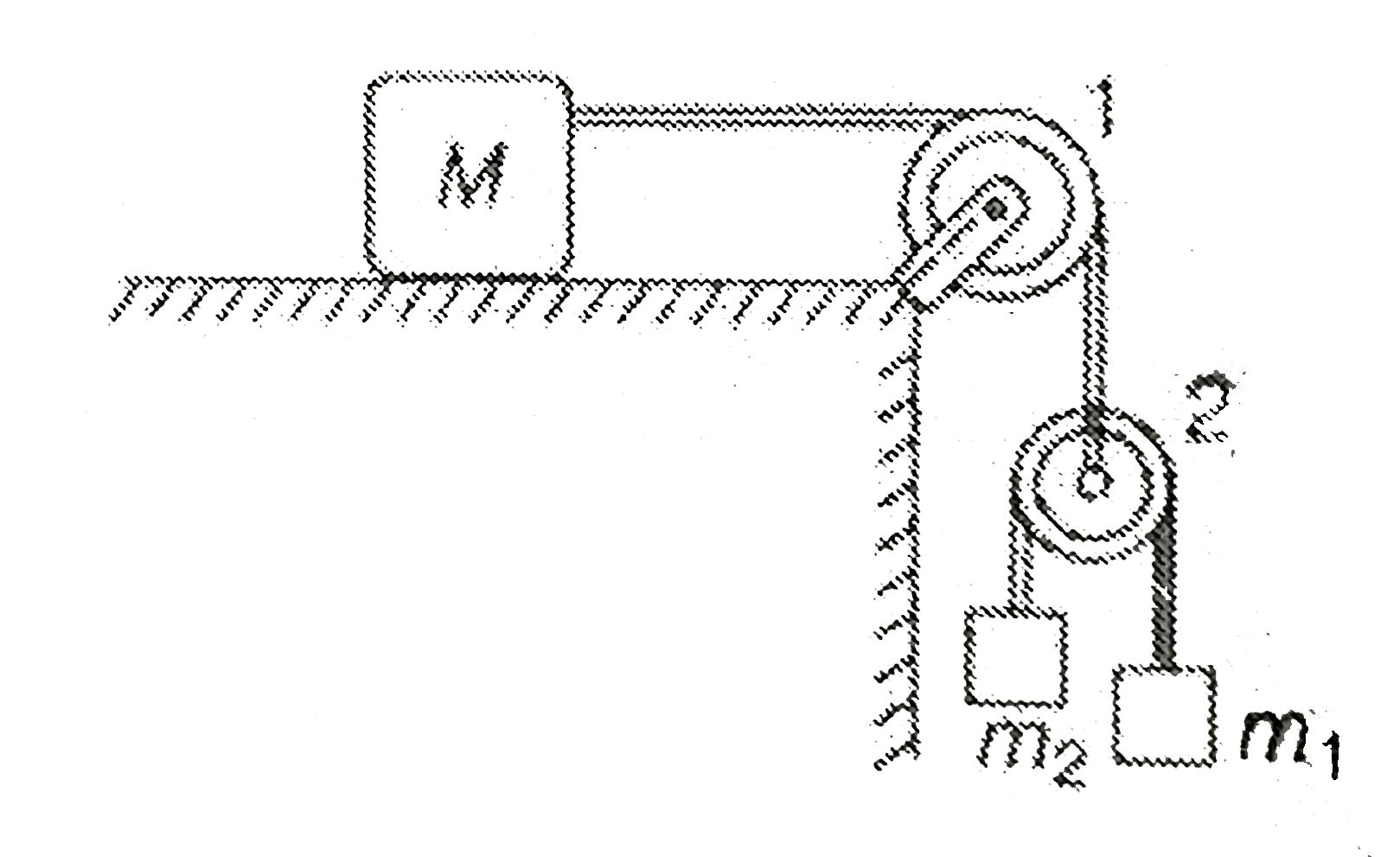 View Solution
View Solution

